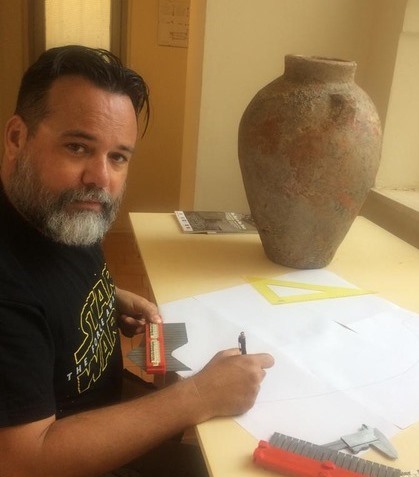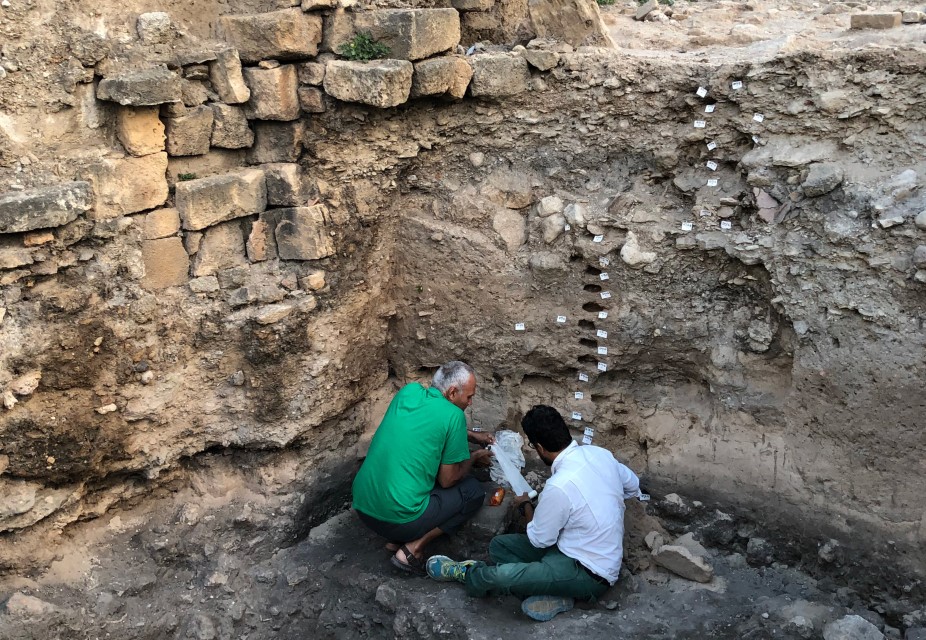-
Principal Investigator: Dr. Francisco Jesús Núñez Calvo
Contact: f.nunezcalvo@uw.edu.pl

Project collaborators:
- General Directorate of Antiquities, Lebanon
- Dr. Kosmas Pavlopoulos, Department of Geography and Planning, Sorbone University Abu Dhabi, UAE
- Dr. Daniil Moraitis, College of Sciences, Applied Physics and Astronomy, University of Sharjah, UAE
- Dr. Olga Koukousioura, Laboratory of Geology and Paleontology, School of Geology, Aristotle University of Thessaloniki, Greece
Project term:
July 2023 to July 2025
Budget:
EUR 9 883
Funding:
Honor Frost Foundation Small Grants Program

-

The paleoenvironmental evolution of a Levantine coastal city in the Bronze Age. The case of Tyre (Lebanon)
Keywords: Tyre, Bronze Age, Paloenvironmental evolution
The multidisciplinary Lebanese-Spanish-Polish project has been conducting archaeological excavations at ‘The Acropolis,’ situated in the southern half of the ancient island, since 2015. This area was previously excavated by Amir M. Chehab and Dr. P. M. Bikai, revealing a stratigraphic sequence of historical significance, ranging from the foundation of Tyre in the 3rd millennium BCE to the present day. Unfortunately, their work was abruptly halted due to the outbreak of the civil war in 1975.
The initial phase of the new archaeological project focused on identifying and connecting the findings from the earlier excavations. The primary objective was to establish a foundation upon which systematic excavations could be planned, providing insights into Tyre’s evolution through its various phases of occupation. The remains from the medieval and Byzantine periods, as well as the Roman city with its new layout and monumental structures, are particularly noteworthy. The Roman influence significantly impacted the Hellenistic and pre-classical remains from the Late Bronze and Iron Ages, which revealed an organized terrace system until the arrival of Rome.
Evidence of earlier periods was discovered through a survey conducted by M. Chehab, unearthing levels from the Bronze Age, which ended with a destructive event leading to abandonment during the Middle Bronze Age. Subsequently, multiple phases of the Late Bronze Age were identified, culminating in a traumatic event, a geologically recognized tsunami.
In light of this historical context, the current project aims to analyze soil samples and organic remains systematically collected from the aforementioned stratigraphic section. The main goals are to investigate the city’s paleoenvironment during the Bronze Age, understand its evolutionary path, establish an accurate chronology, and contextualize Tyre’s history within the ancient Levant.
Associated events:Lectures and conference presentations:Project bibliography:Links
- Website of the Honor Frost Foundation
- Read about Tyre
- On social media – #TyreAcropolis
